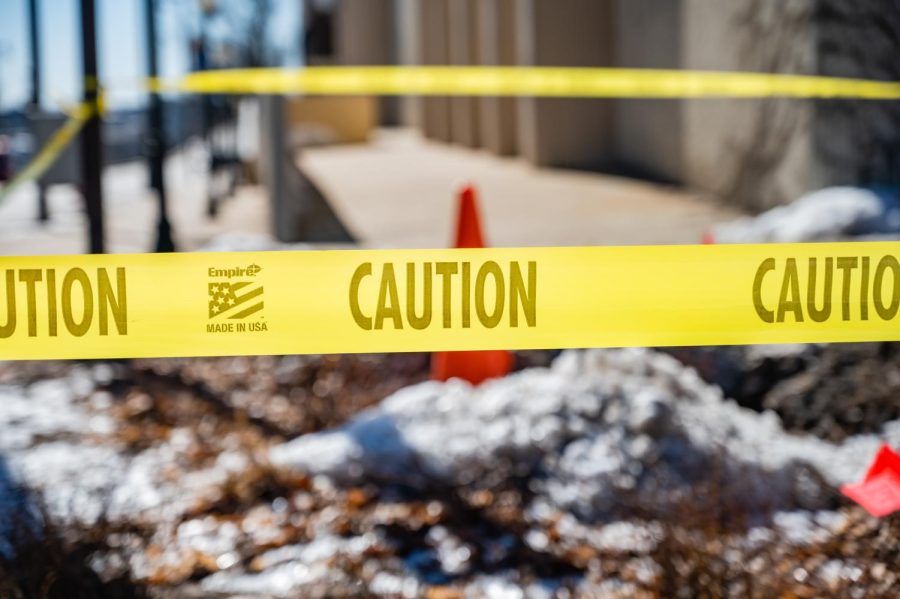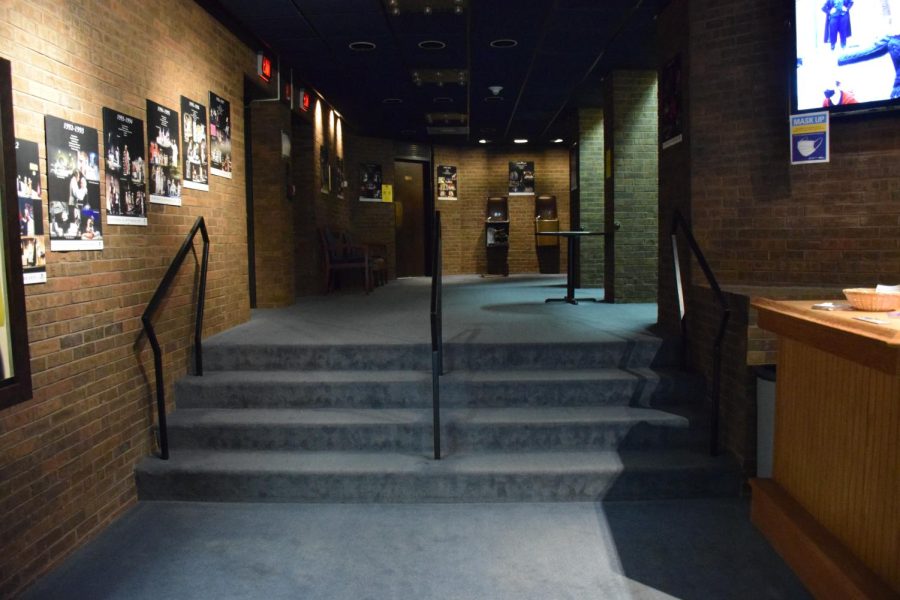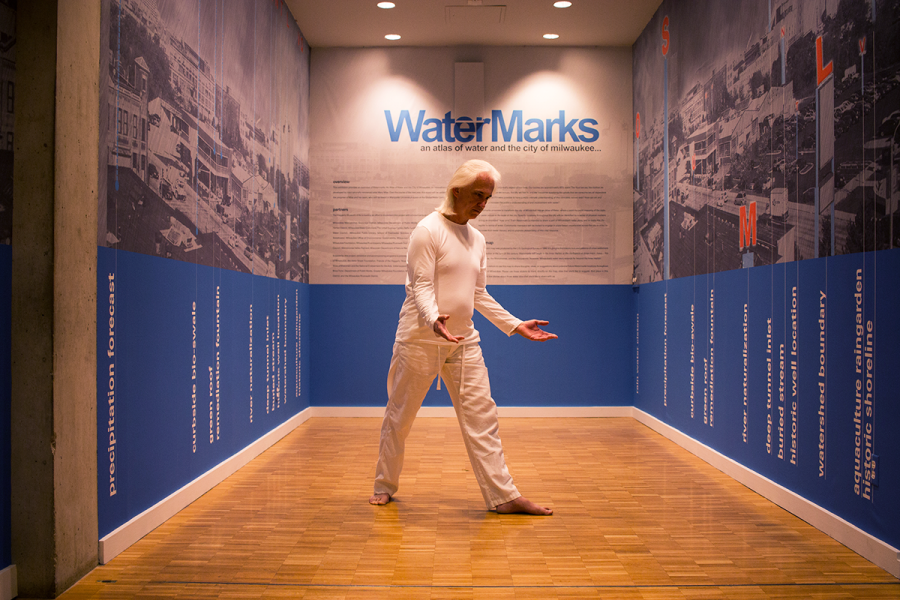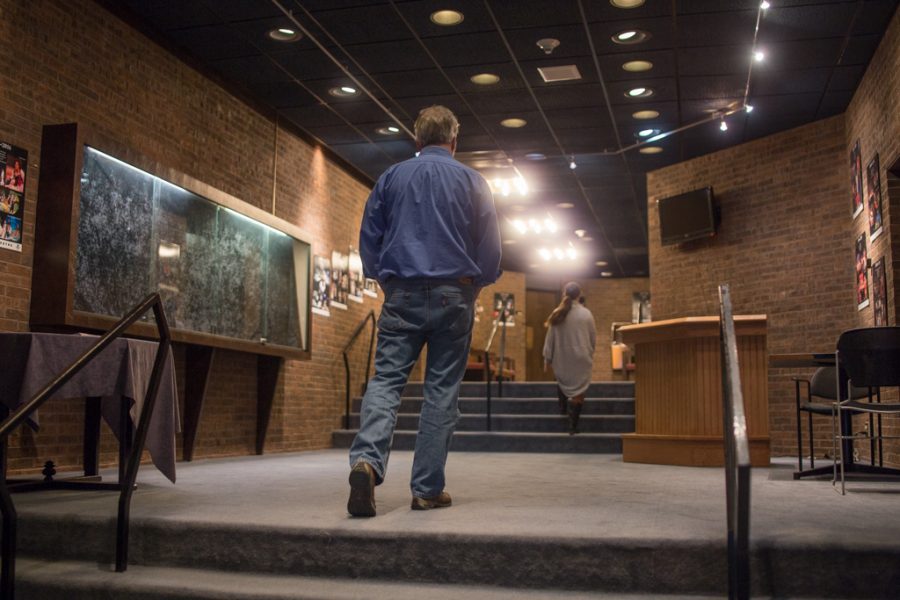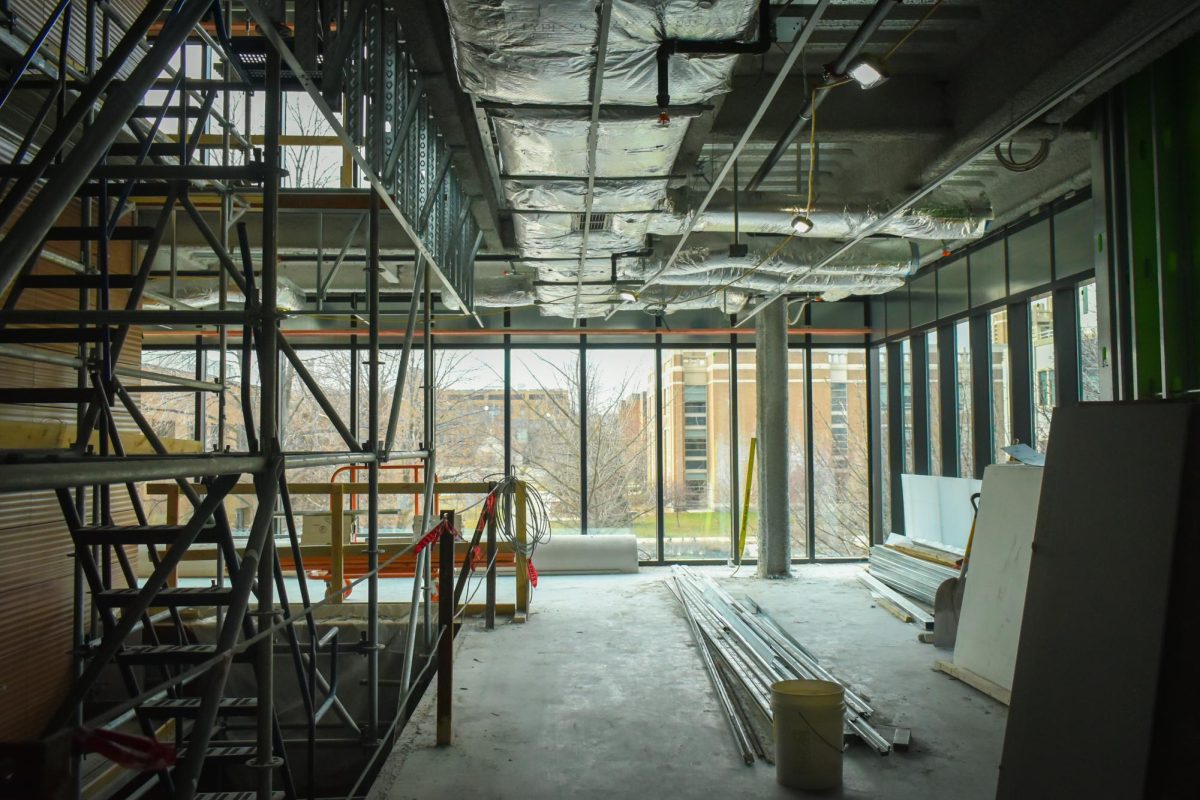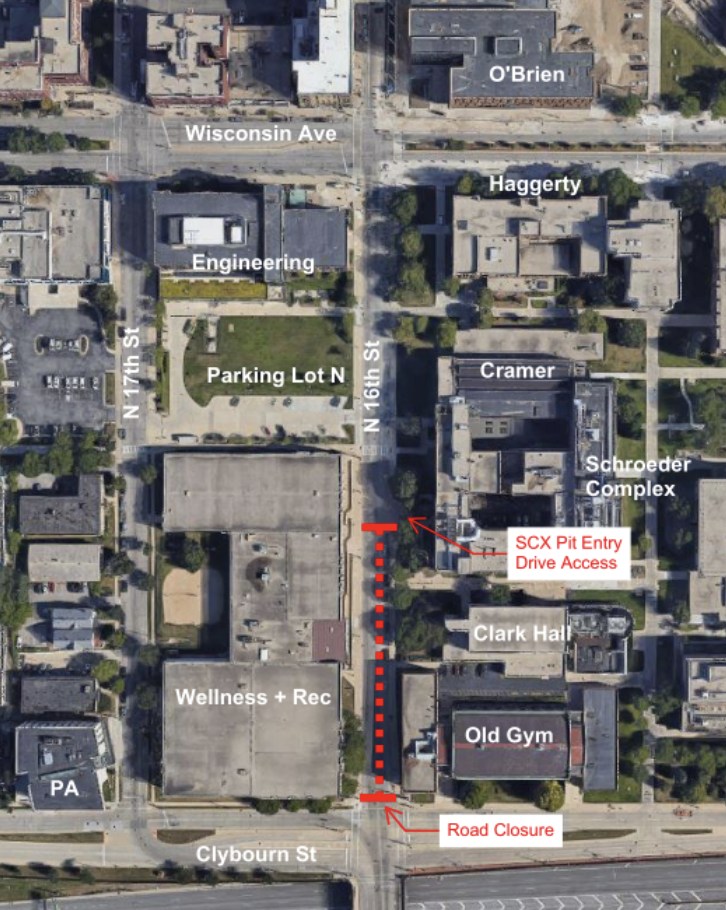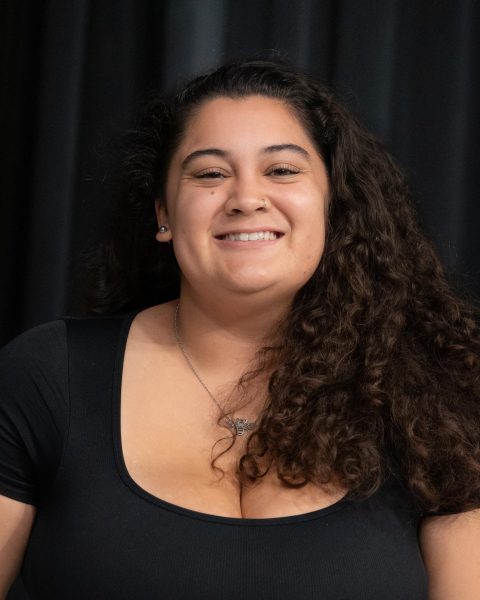Bright orange cones and chain-link fencing litter campus as buildings are being remodeled, torn down or constructed.
Marquette has a few ongoing construction projects, including revamping Straz Hall into the new College of Nursing building, renovating the Helfaer Recreational Center and the recently finished O’Brien Hall for business.
Lora Strigens, vice president for planning facilities management and university architect, says the master plan for construction on campus opened up an opportunity for flexibility and growth.
“Every square foot has value, so we want to be sure we’re using that efficiently and effectively,” Strigens says. “We’re thinking about what the impact for our student population on campus is, student experience is first and foremost on our minds.”
Marquette University President Michael Lovell says the home of the College of Nursing, Emory-Clark Hall, is being moved to a new building for one main reason.
“The expansion of nursing school can’t educate all of the nurses that come to Marquette in the way they want to at the current facility so we’re updating it to (the model of) O’Brien Hall,” Lovell says. “We want to transform the spaces when they (students) aren’t in the classroom and the way they interact with each other. We want to transform the classroom to really give them a first-class education.”
Kyla Schwager, a sophomore in the College of Nursing, says she appreciates the improvements and advancements that will be included in the new nursing building.
“I’m most excited to see the expansion of graduate programs and having more space,” Schwager says. “Emory Clark is really small. I noticed our classes are getting crowded. Some classes there are 150 people and others there are 15 to 20. I don’t know how they’d manage that in Emory-Clark.”
The use of the current nursing building, Emory-Clark Hall, is yet to be determined.
The Rec Center is also being updated, leaving many students to attend the Rec Plex or O’Donnell Hall instead. Gabrielle Prehn, a first-year in the graduate school, previously worked at the Rec Center and is now floating through the several temporary workout locations.
“I think Marquette put us in a pretty bad position by closing the Rec Center and we are doing the best we can for the next two years,” Prehn said. “The [Rec] Plex is always super busy and working there can be stressful, but the other locations are chill. Overall, it just changed the dynamic when you stop using one of the main buildings.”
Lovell says the Rec Center has needed to be updated for a long time, which is a project he says students deserve and have been asking for. The new 180,000 square foot building will include a 25-yard swimming pool, a counseling center, a spin studio, four tennis courts and more.
While administration plans for the construction to usher in a new age for Marquette, there are still questions regarding the accessibility of these new buildings.
With new buildings in mind, Strigens says it’s important to be aware of accessibility, even though every building meets the code at the time it was built.
“With the new buildings, we can think through on the front end to make sure accessibility issues are addressed, there are gender inclusive restrooms and wellness spaces. It’s harder to do that with old buildings,” Strigens says.
Marquette’s campus is home to many old buildings, several of which may be difficult for disabled or injured students to access. These buildings require people to climb stairs to reach the elevator and have inaccessible bathrooms among other issues. These older buildings, sometimes referred to as the ‘Historic Core,’ include Johnston Hall, Marquette Hall and Sensenbrenner Hall. They were built in the early 1900s.
“The more interesting challenge was likely on renovating the Historic Core, you take three buildings that are all a 100 years old and have to bring them up to the current codes and standards,” Mark Federle, associate dean for the Opus College of Engineering, says. “Sorting through all those challenges would’ve more interesting than when you’re just starting with a brand-new building.”
To address these accessibility issues, Marquette’s Planning and Facilities Management collaborates with several departments within the university.
“There are a lot of campus partners that are part of that; Office of Disability Services, Diversity and Inclusive Excellence, there’s a lot of voices that are important part of that project,” Strigens says. “I’d say there’s still a lot more we can do on campus to make sure that everybody feels welcome and comfortable in space, but we continue to look at those opportunities.”
The older buildings on campus comply with accessibility codes for the time they were constructed, but newer facilities are all required to be compliant with the Americans with Disabilities Act. However, it is worth noting that the ADA hasn’t been reformed or reviewed since the 1990s.
Federle says another challenge is creating an argument compelling enough to get contributors to want to help fundraise campus construction projects.
“One of the challenges that Marquette has is these big ideas that we have for changing requires a great deal of fundraising,” Federle says. “Both O’Brien Hall and Engineering Hall were completely funded external to any student tuition dollars.”
Additionally, the Wellness and Recreation Center is actively fundraising and campaigning for donations from the campus community. The university states that once $10 million is raised, there is an anonymous couple who will donate another $5 million.
Despite challenges, Lovell says he wants to leave an impact on campus that will be remembered.
“The legacy I want to leave is I want Marquette to keep innovating and keep changing and be looked at as a university that is on the cutting edge,” Lovell says. “It’s one thing to have a diverse campus and it’s another to make everyone feel welcomed and supported.”


